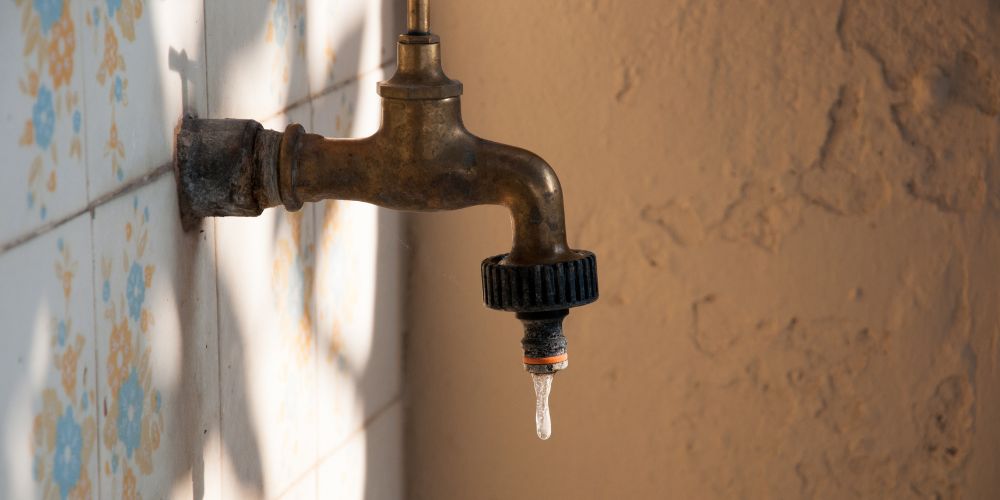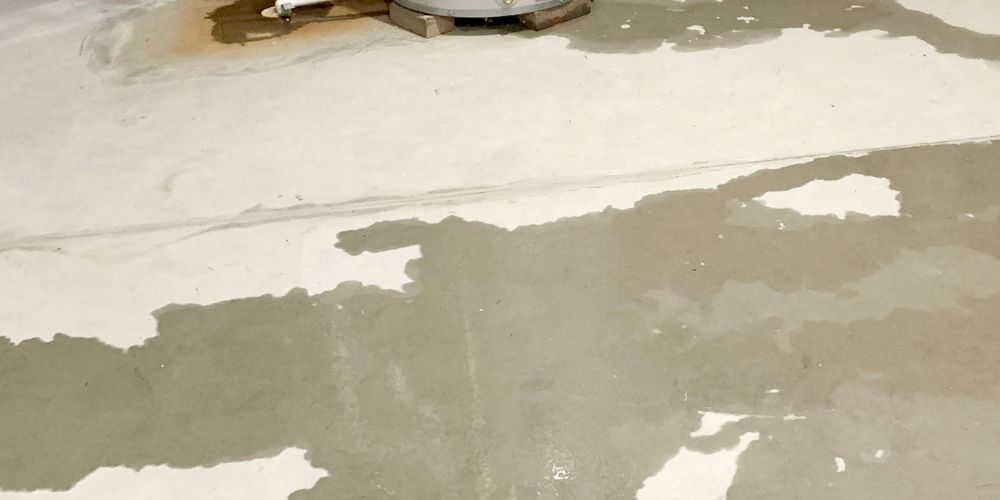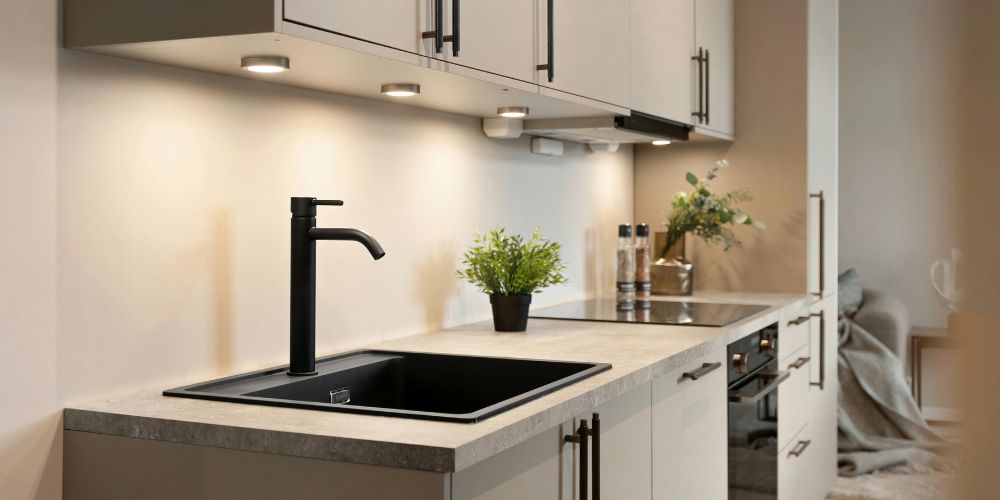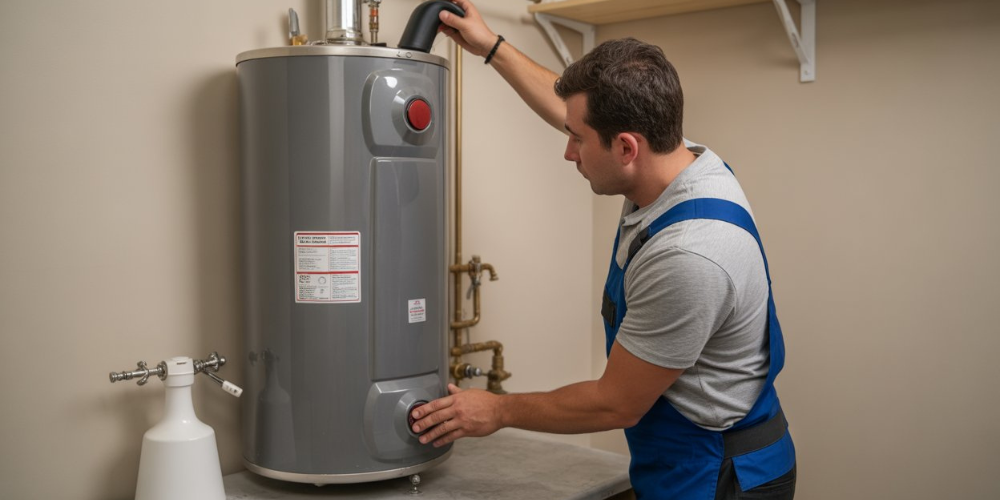We’ve all experienced clogged drains and pipes that require a plumber, but what if the issue isn’t drainage—it’s low water pressure? The average home water pressure ranges from 40 to 45 PSI, and if your water flow seems weak, it’s likely that your pressure has dropped below this level.
With American households using an average of 300 gallons of water daily for activities like showering, dishwashing, and flushing toilets, it’s easy to overlook where the water comes from and how it reaches our taps. Most people don’t know what to check when the pressure drops.
Here, we’ll explore 9 possible causes of low water pressure and how to fix them. Read on to understand the reasons behind low water pressure issues and learn when to call a professional.
What are the Causes of Low Water Pressure?
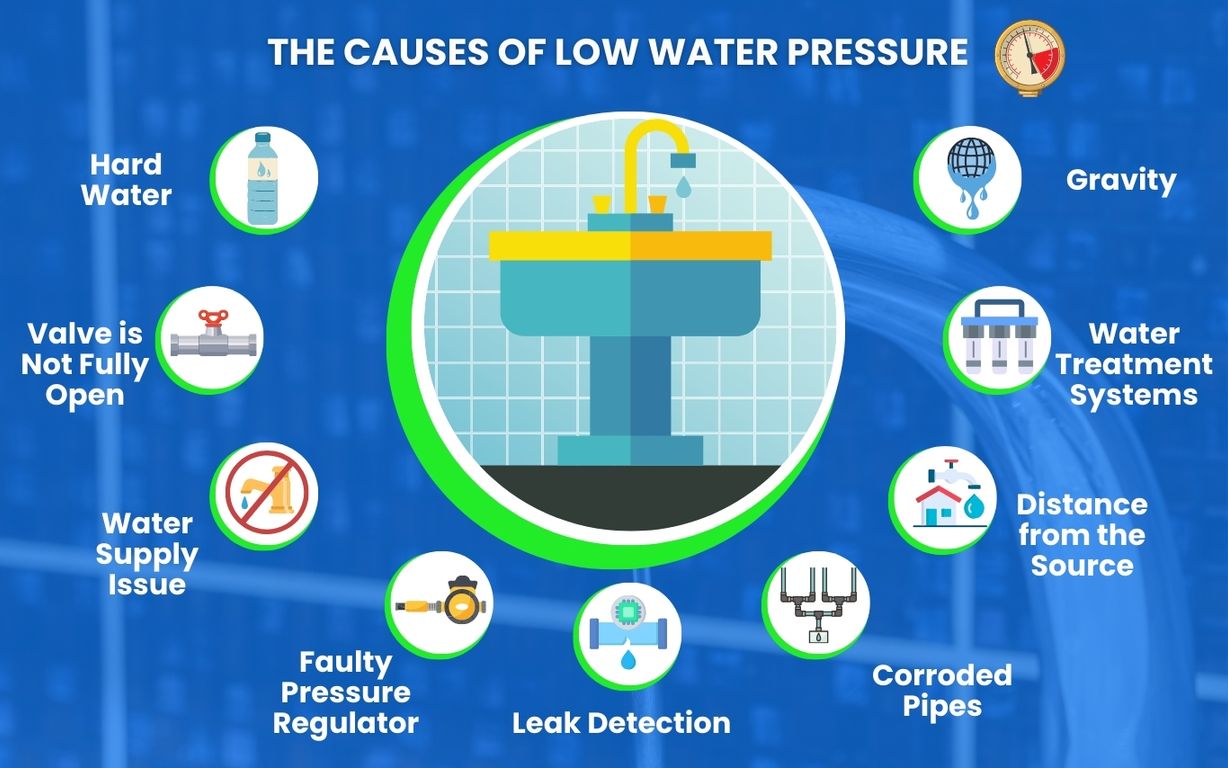
Low water pressure issues can be frustrating, and it’s often caused by several underlying issues, such as pipe corrosion, mineral buildup, leaks, and even the effects of gravity. Let’s explore the common culprits:
1. Hard Water
One major cause of low water pressure is hard water. Hard water is high in minerals, especially calcium and magnesium, which can build up over time and create scale inside your pipes. This scale reduces the diameter of the pipes, restricting water flow and ultimately lowering water pressure.
Solution: When scale buildup becomes severe, it can block water flow completely, making pipe replacement the best option. While products like CLR (Calcium, Lime, and Rust remover) can help break down some scale, using them in your plumbing can lead to more problems. As the scale loosens, it can clog other parts of your system. Additionally, pouring harsh chemicals into your water supply isn’t ideal for drinking water. A more effective long-term solution is installing a water softener, which prevents mineral buildup and protects your plumbing.
2. The Main Water Shut-Off Valve is Not Fully Open
If you’ve noticed a sudden drop in water pressure after a recent repair, the main water shut-off valve might not be fully open. During repairs, the valve is often closed, and if not reopened, it restricts water flow and indicates low water pressure repair.
Solution: Find the main shut-off valve, usually located where the water line enters your home, and turn it counterclockwise to fully open it.
3. Municipal Water Supply Issue
Sometimes, low water pressure is due to issues in the municipal water supply, like leaks or pipe corrosion, rather than your plumbing system.
Solution: Contact your local water provider to report the issue. They may not be aware of the problem and can work to fix it quickly.
4. Faulty Pressure Regulator
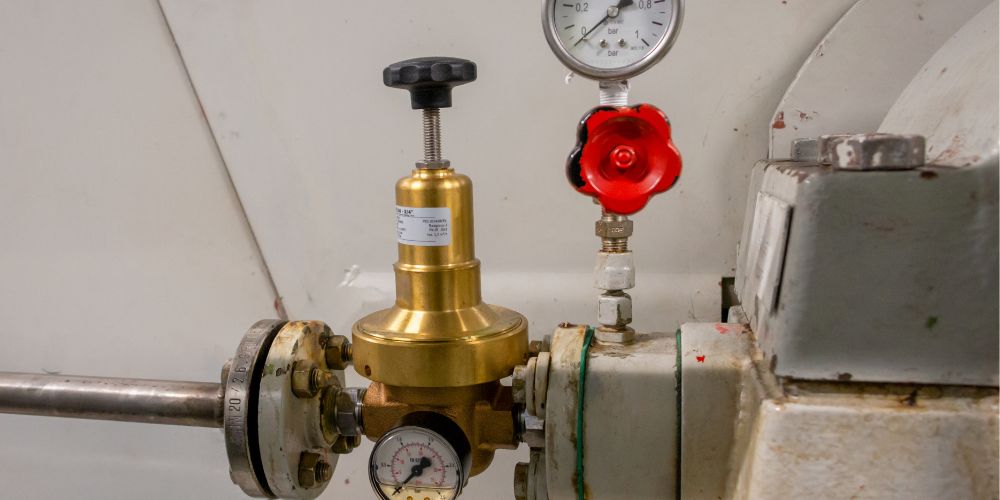
The pressure regulator controls the water pressure coming into your home from the main water line. If it’s set too low or malfunctioning, you may experience low water pressure. Normally, it’s set at 50 psi, but if it’s lower, your water flow will be weak.
Solution: Check the regulator and adjust it to 50 psi if needed. If it’s still causing issues, have a plumber inspect and replace it if necessary.
5. Leak Detection:
Leaks can significantly reduce water pressure by disrupting water flow. To check for leaks, turn off all faucets inside and outside your home, and after an hour, check your water meter. If the meter still shows water usage, you likely leak.
Solution: Contact a licensed plumber to locate and fix the leak. Once repaired, your water pressure issues should return to normal.
Also read, How to Detect Water Leaks in Your Home?
6. Corroded Pipes:
Corrosion happens when oxygen in the water reacts with metal pipes, creating rust and other buildups that restrict water flow. This buildup reduces water pressure and tends to worsen in older pipes or with acidic water. Signs of corrosion include brown or red-tinted water with a metallic taste.
Solution: The only fix for corroded pipes is to replace them. Once new pipes are installed, water pressure should improve.
7. Gravity’s Impact:
Water pressure can drop when water needs to travel upwards, like in multi-story homes or tall buildings. The higher the water needs to go, the more gravity slows it down.
Solution: Install a water booster pump to counteract gravity, improving both water pressure and flow.
8. Distance from the Water Source:
The farther your home is from the municipal water source, the more water pressure can decrease due to the longer distance the water has to travel.
Solution: A water booster pump can help increase water flow and pressure in homes located far from the water source.
9. Water Treatment Systems:
While water treatment systems help improve water quality, they can sometimes cause low water pressure if not properly sized, restricting water flow.
Solution: Ensure your water treatment system is properly sized to avoid pressure drops. If necessary, add a booster pump to maintain good water pressure without damaging your filtration system.
How to Boost Well Water Pressure?

If your well water pressure is too low, you can try a few simple steps to improve it: adjust the pressure switch on your tank, clean out debris from your pipes, or install a constant pressure system. Here’s a breakdown of each method:
1. Adjust Your Pressure Tank’s Switch
Start by testing your water pressure with a pressure gauge. If it’s below 40 psi, you can adjust the pressure switch on your tank to increase it. The switch is typically found on the pipe connecting your well to the storage tank. Most systems are set to turn on when the pressure drops to 30 psi and turn off at 50 psi, but you can adjust it to a maximum of 60 psi if needed. Also, ensure your pressure tank is the right size for your well system to help maintain steady water pressure.
2. Check Your Pipes for Debris
Over time, sediment and mineral buildup can clog pipes in a well system, leading to reduced water flow and low pressure. Having a licensed plumber inspect and clean the pipes can help restore proper water pressure by removing blockages.
3. Install a Constant Pressure System
A constant pressure system is a more advanced option that ensures stable water pressure, even when multiple faucets are running. It works by adjusting the pump speed based on the water demand—when demand is high, the pump runs faster, and when demand is low, it slows down. While this system offers a reliable, city-like water supply, it can be pricey and more complex to install.
For households with varying water usage, a constant pressure system might be worth the investment to keep your water pressure consistent.
Why My Place’s Water Pressure Has Decreased?
If your water pressure has decreased, it could be due to several factors affecting your plumbing system. Common causes include clogged pipes, mineral buildup in fixtures, hidden leaks, or a faulty pressure regulator. Sometimes, municipal water supply issues or partially closed shut-off valves can also lead to reduced water flow.
To fix the problem, check for visible leaks, clean faucet aerators, and ensure your main water valve is fully open. If the issue persists, you may need a professional plumber to inspect your system.
How can you tell if you have low water pressure?
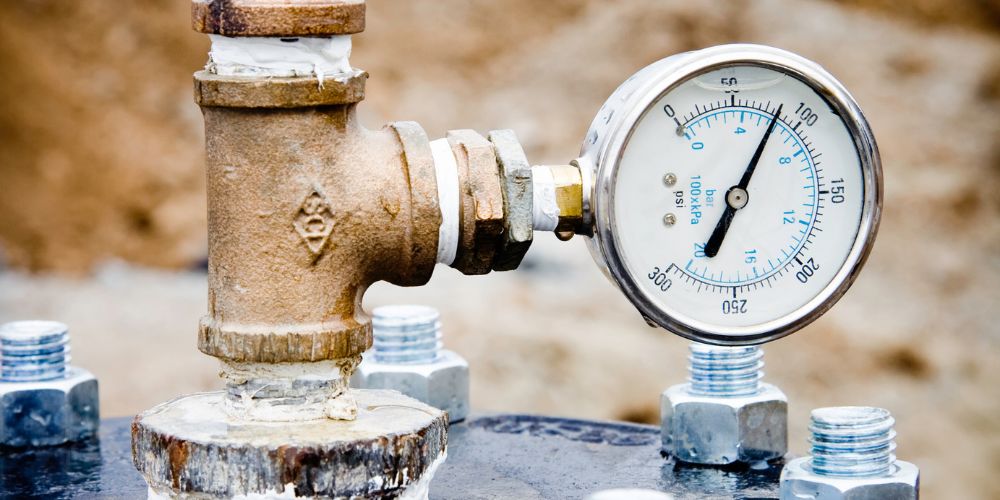
The easiest way to check is by using a pressure gauge. These are simple, affordable tools that let you measure your water pressure with a quick look.
If you get water from a municipal source, use an outdoor faucet near where the main water line enters your home. If you’re on a well, pick a faucet close to the well’s pressure tank. Attach the gauge to the faucet and make sure it’s secure. Before testing, ensure no water is being used anywhere else in your home. Then, fully turn on the faucet. The gauge will display the water pressure. Normal pressure is between 40 and 60 psi, so if the reading is below 40 psi, your water pressure is low.
Do Water Booster Pumps Really Increase Water Pressure?
Yes, water booster pumps are designed to increase water pressure, improving water flow throughout your home. Think of a booster pump as working like a fan: just as a fan’s blades spin to move air faster, a booster pump uses an impeller to push water through your system with more force. This increased pressure ensures better water flow from your taps, showerheads, and appliances.
Most water booster pumps are centrifugal pumps, which means they pull water from a source and push it through one or more impellers. A single-stage pump uses one impeller to increase water pressure, while multi-stage pumps use several impellers for even higher pressure. Once the water is pressurized, it flows smoothly through the outlet and into your home’s plumbing system, providing a noticeable difference in water performance.
Final Thoughts
Low water pressure can stem from various causes, such as mineral buildup, pipe corrosion, leaks, or issues with your water supply. Identifying the root cause is key to resolving the issue and restoring normal water flow. Regular maintenance, proper equipment like booster pumps, and timely repairs can help prevent pressure drops. If you’re unsure how to fix the problem or suspect a more complex issue, contacting a professional plumber can save time, money, and frustration in the long run.


